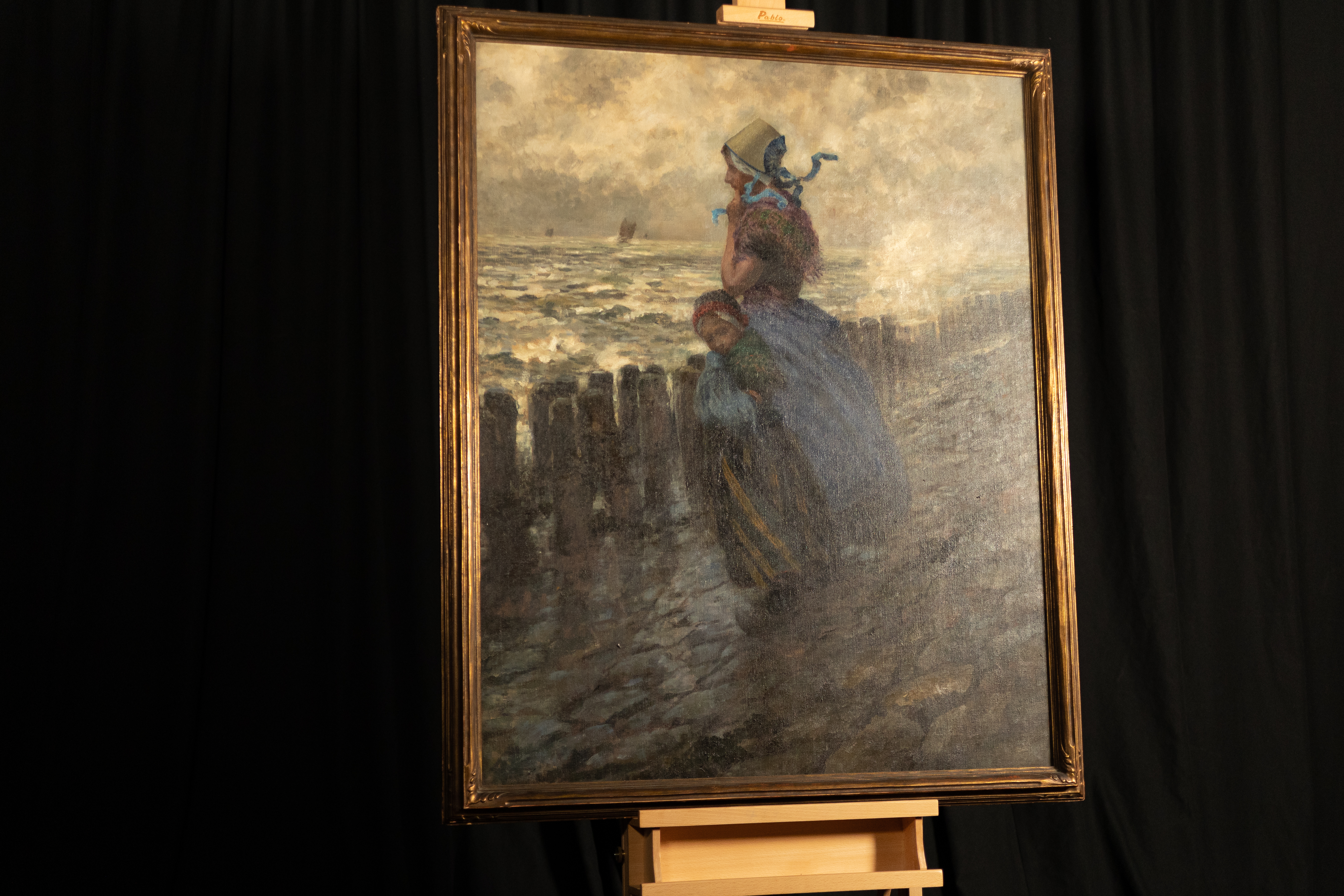
How long has it been? The sting of the wind and the sea spray seep into our bones with a deep chill. Has it been a moment or an hour that we’ve stood here? That they’ve been here – silent, staring, waiting? One set of eyes is fixed on the horizon. Open and wistful they scan the ships off shore, pleading. Another set of eyes, shadowed and obscured, glance timidly up at us – watching us watch them.
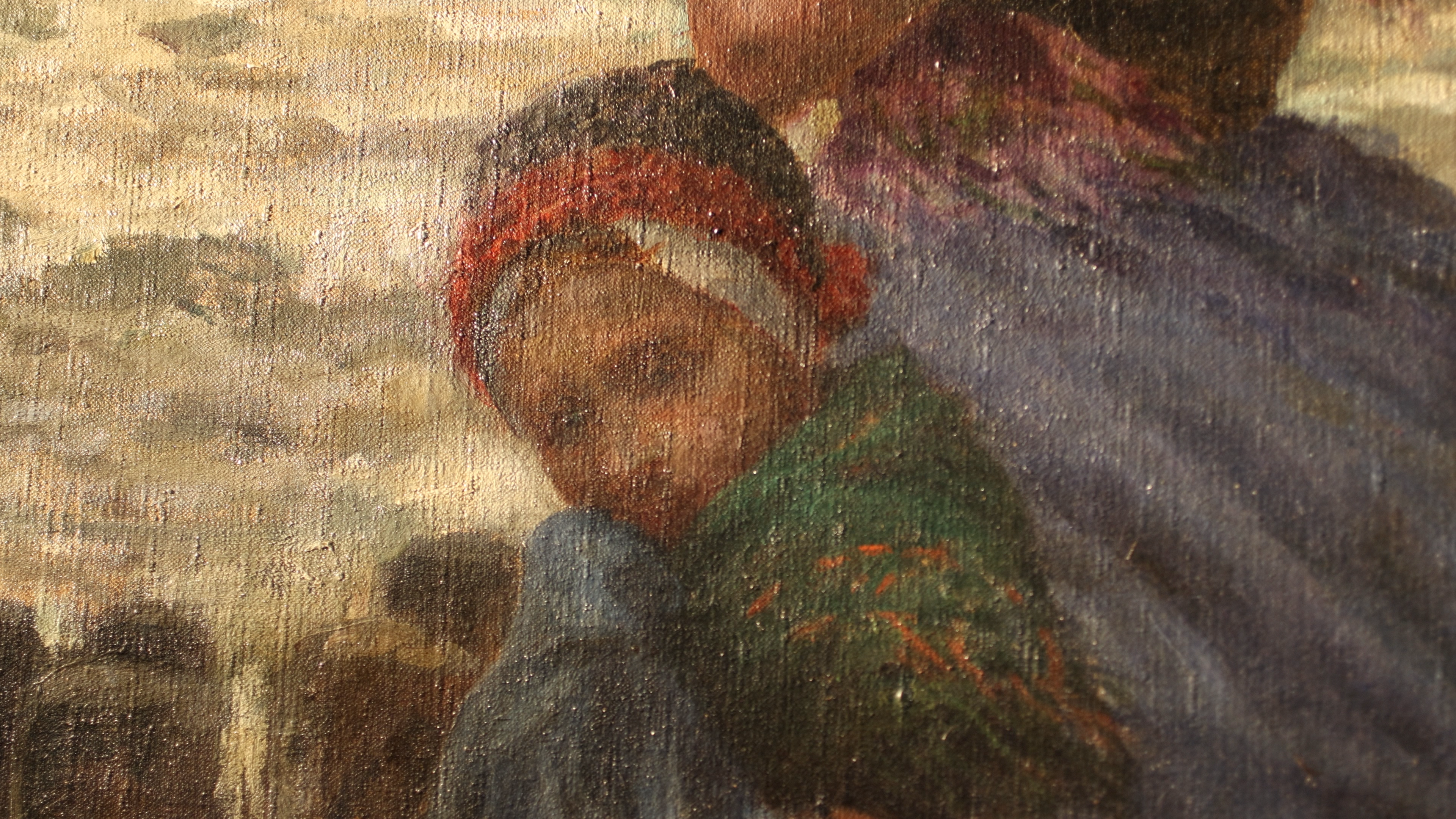
The little head tilts and nestles into a bundle of blue fabric. She pulls it to her tightly. Her eyes gently close as she remains pressed against the woman beside her, both of their skirts billowing in the wind. We stand on the slippery cobblestones, wet with the gloomy sea spray, watching the two as they wait. How long has it been?
Waiting…
Those who have waited for a friend or a loved one know the complexity of emotions that surround the act of waiting. Not a passive everyday waiting but the kind that seems to warp time, sometimes stretching weeks and months, or years even. The kind of waiting that can feel sad and draining and lonely. Gray and bleak. The kind that you want to pass quickly but instead moves tauntingly slowly.
As a U.S. Navy wife, I’ve experienced this daunting waiting – the wondering, the worrying, the wishing. I know many others who have experienced the same or similar experiences of waiting when a spouse or loved one was away on deployment. In my experience, my now-husband (then fiancee) was on a West-Pac (Western Pacific) submarine deployment during an especially turbulent time in the world and had a stretch of 40+ days underwater. No calls, no emails, no texts, or anything to reassure me or our loved ones that he was okay. I can only imagine how that worry would be amplified in a time like the painting reflects or even more recently, before texting, calling, and emails.
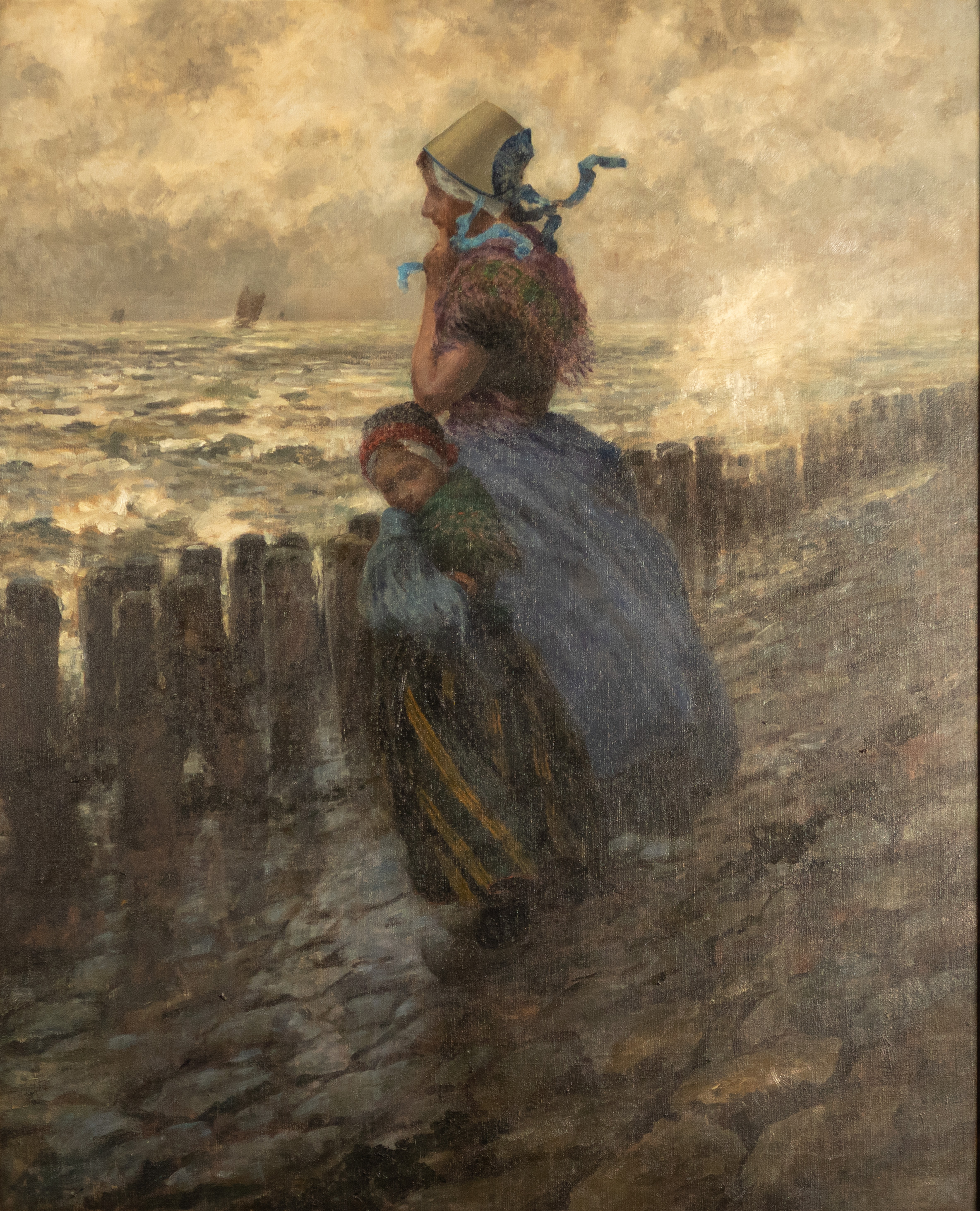
This work by George Hitchcock is titled “Looking Out to Sea” and though the artist has given us no explanation that the subject is, in fact, waiting for something – someone, it feels apparent. This work is one that has been on my list – itself waiting. It’s one that I’ve seen countless times and thought, I need to wait. Because it’s one that intrigues me, confuses me, changes each time I see it, and its one that makes me feel – deeply. Those emotions as complex as the waiting itself.
Creating Complexity
The artist has skillfully used color and composition to create this emotional complexity, churning up feelings within us regardless of whether we’ve shared this same experience of waiting or not. The diagonal of the wooden barrier has split the composition, creating a “here” and “there”, perhaps a sort of division that the woman feels. Her on land and the person, likely a love, off at sea. He’s also placed the two figures squarely in the center of the canvas – in doing so, and in bisecting that diagonal there’s a kind of symbolism – her feet are on land but her head and heart are focused on the sea.
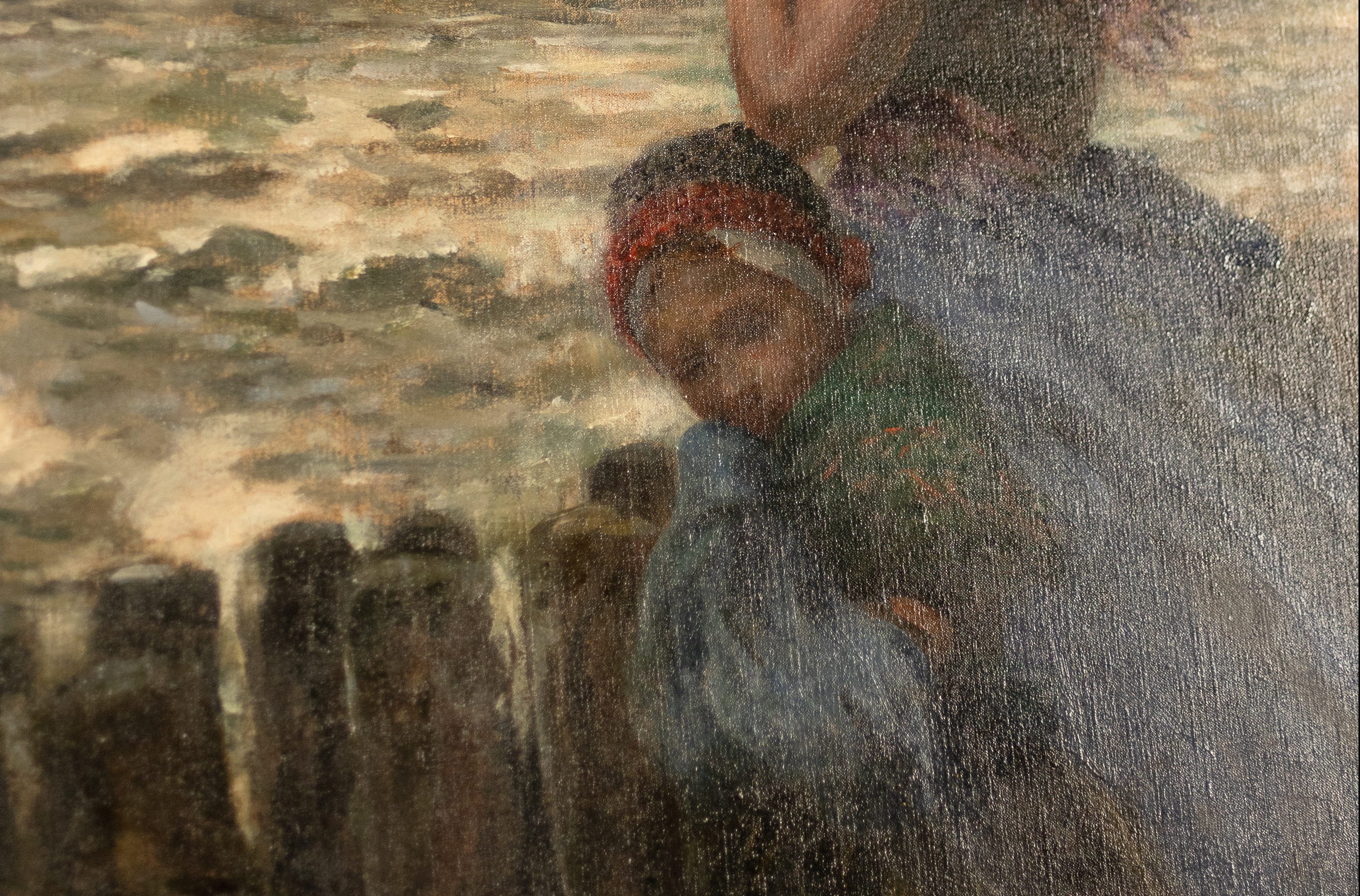
The artist has used these elements too, to draw us in to share this forlorn moment with our subjects. There are many components that could serve as a visual starting point in this work, but it’s the child’s shadowed eyes that draw me in. It’s one of the things about this work that seems to change each time I look at it.
Because we cannot see her eyes clearly, her gaze seems to shift between looking down and looking directly at us – staring back at us as we look at her and the woman beside her. She’s engaging with us in a way that a portrait doesn’t normally and it’s because of this interaction that we feel that we’re not just watching this scene, but rather that we’re there with them.
Beyond the Frame
The gray blustery day spreads beyond the constraints of the canvas and frame, surrounding us. We feel the chill that the child is shielding herself from. We hear the rumble and crash of the choppy wind-blown waves that crash against the stone walkway and its wooden barrier.
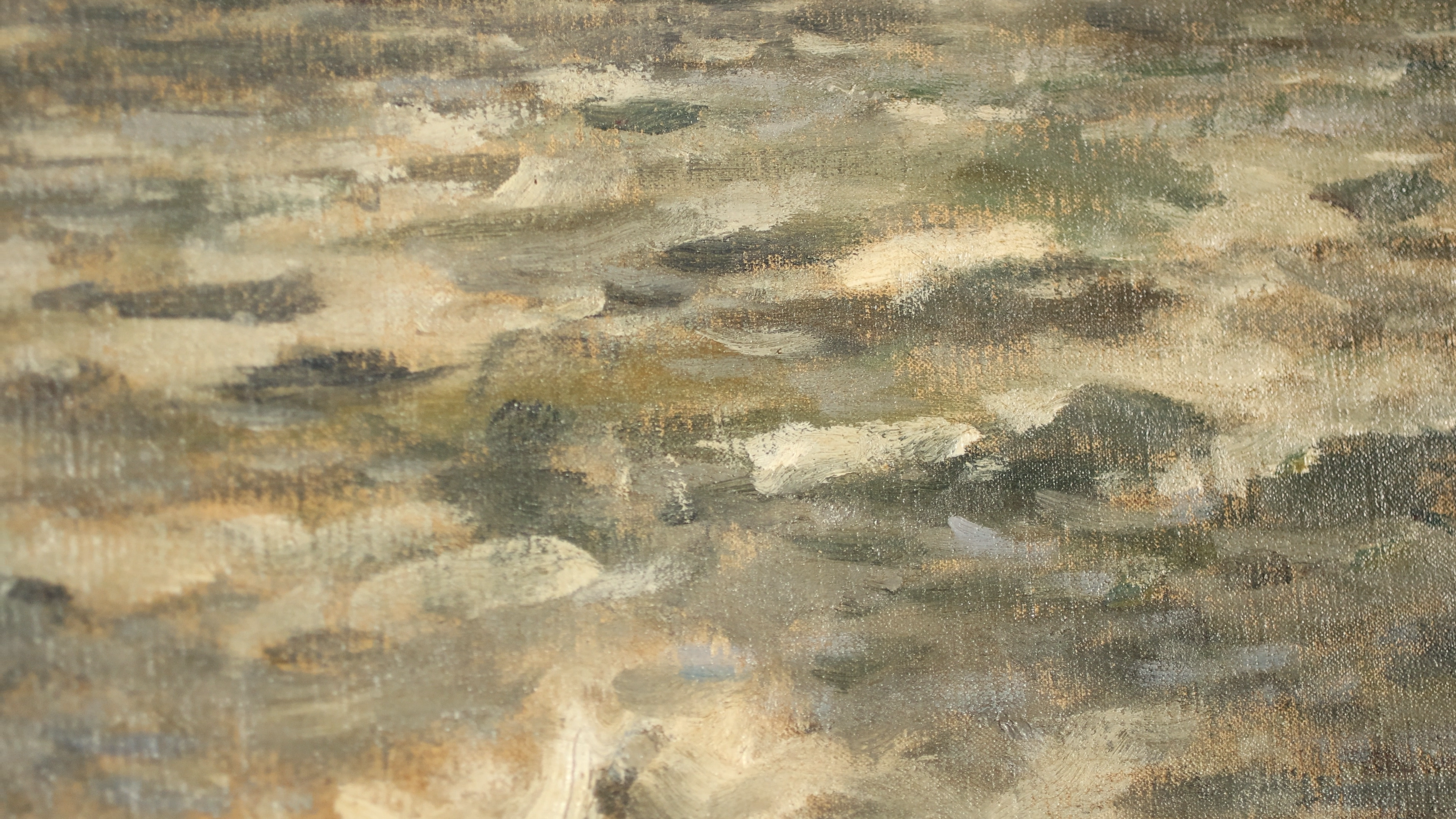
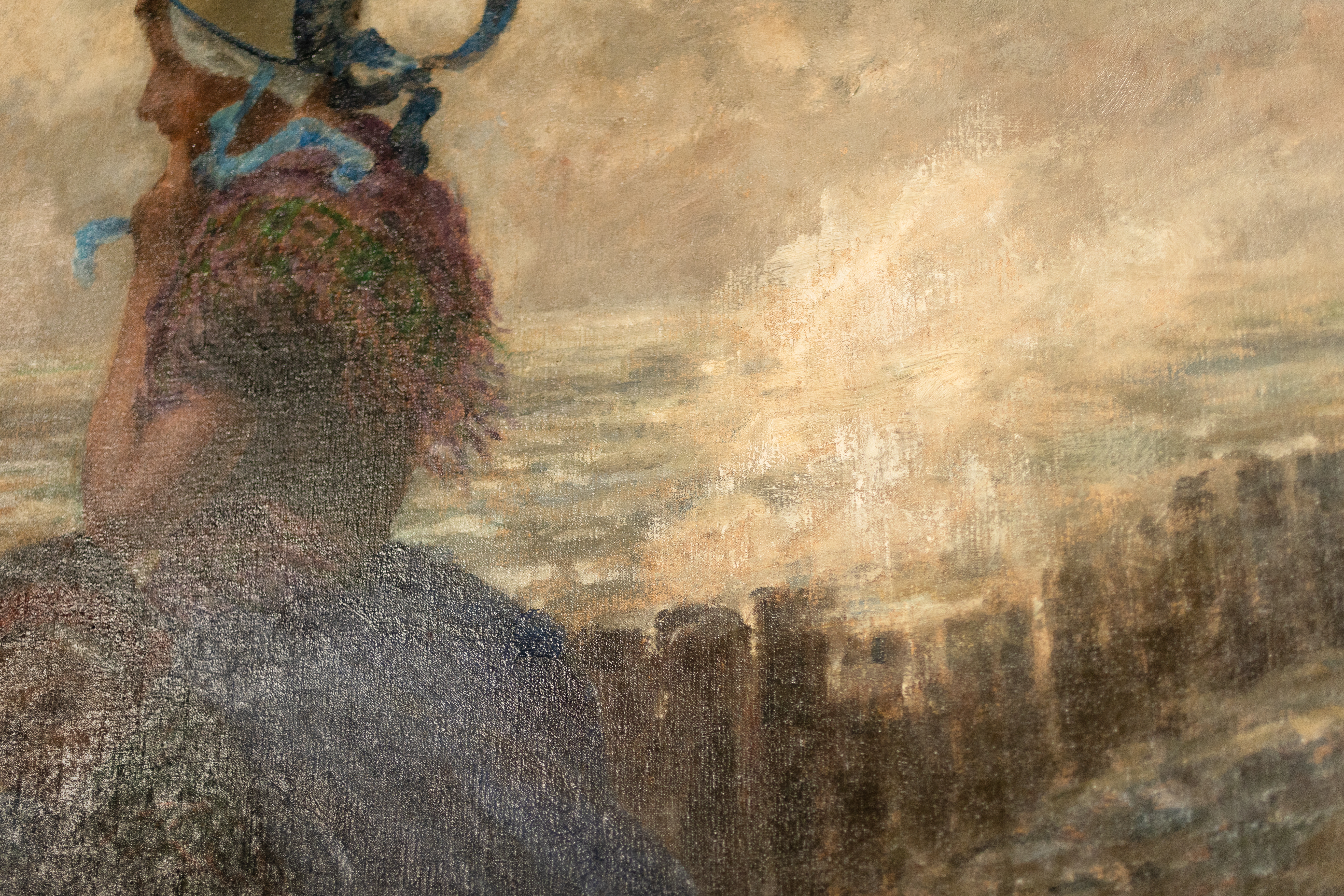
The ribbons on the woman’s bonnet flutter in the wind – their bright blue seems almost out of place in the palette of muted colors and tones of gray but they draw us up to her face, to her expression.
Her face is blank and her chin is tucked slightly in focus. Her left hand drawn up to her chin absentmindedly in a suggestion of deep thought. Is she staring out to sea while lost in a world of memories that swirl within her mind like a film? Who is she thinking of? Will they ever return? How long has it been?
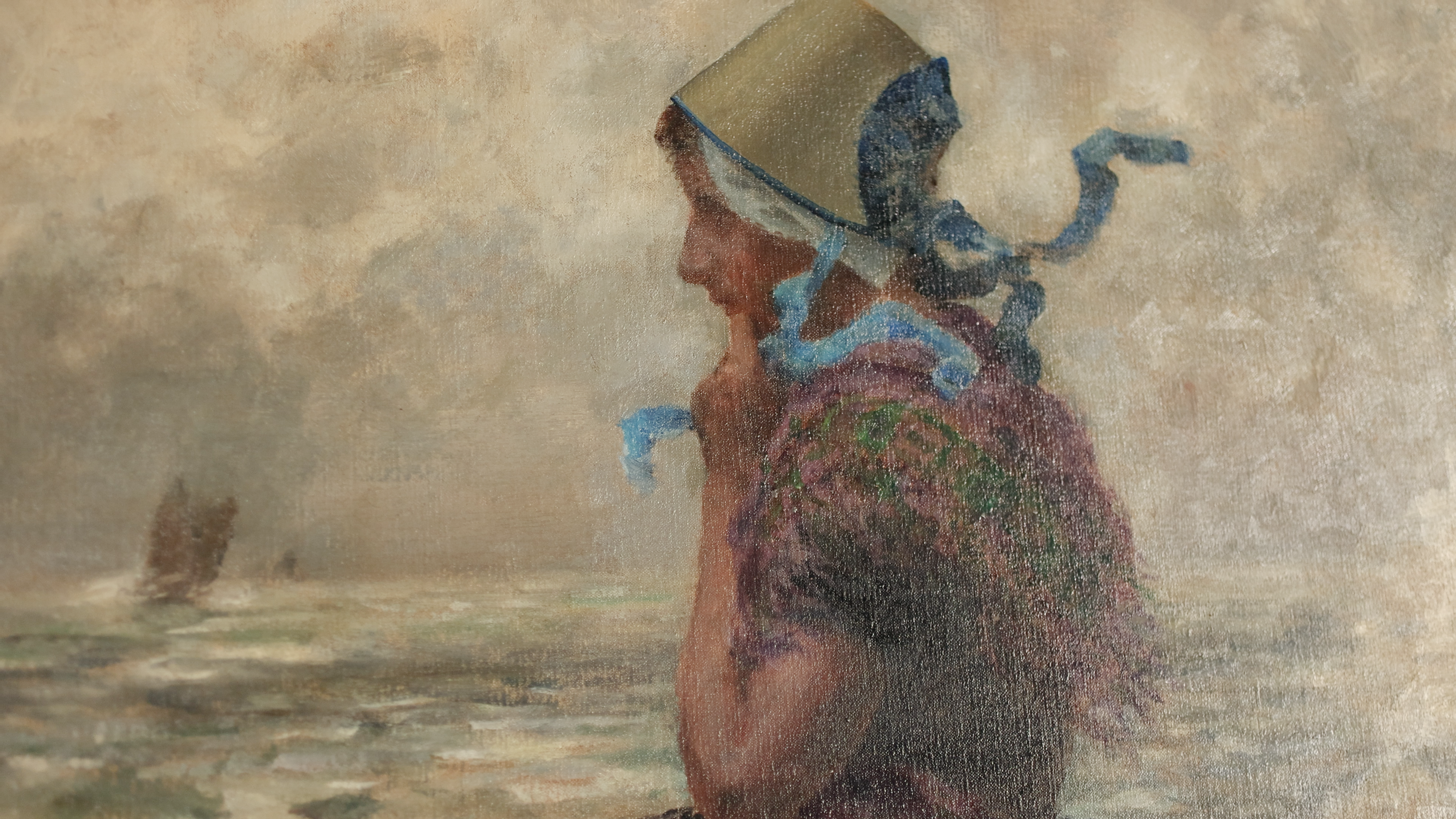
Why we wait
Waiting…Those who have waited for a friend or a loved one know the complexity of emotions that surround the act of waiting. Because buried deep within that sadness and loneliness we wait because we hope, we wait in anticipation. We wait with a mind full of memories and dreams that are the spark of color that breaks up the chilly gray just as their clothing has done in this work. She’s waiting and we’re there too – the artist has brought us here and maybe it’s to be an observer, but maybe it’s to stand with her. To wait with her and to help her face the unknown, open sea. Maybe he’s brought us there to be a friend.
Watch the full episode below!
About the Artist:
Who was George Hitchcock?
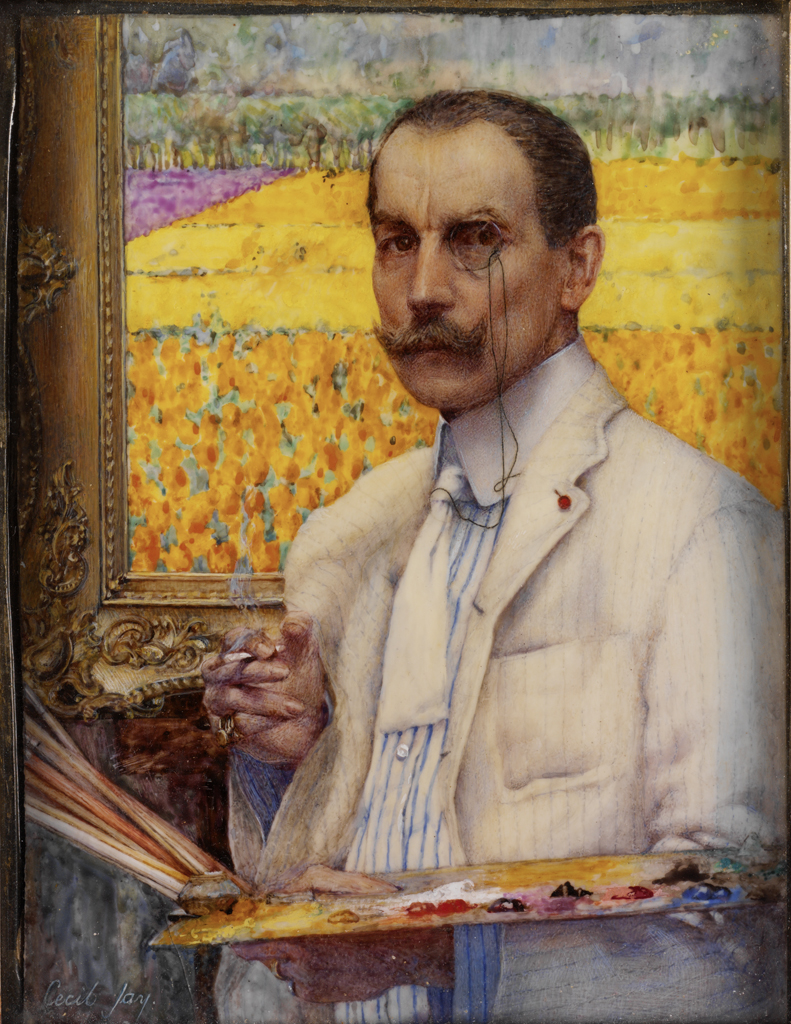
George Hitchcock was born in Providence, Rhode Island in 1850, but he spent much of his life in the Netherlands where he died on Marken Island in 1913. He originally studied at Brown University and then Law at Harvard, but turned towards art in 1878 or 79. See George Hitchcock: Painter of Holland for a more complete account of his life and travels. His work began with watercolors but later he turned toward oils as well. He left America to study under artists in England, France, and Holland where he remained for many years. He painted many works with religious subject matter including Vespers and The Flight into Egypt. Before 1887, his palette was primarily muted and one can find mostly gray-brown or blue with subtle hints of color as seen in our Looking out to Sea above.
George Hitchcock is most famous for his vivid depictions of the glorious tulip fields of Holland. His Tulip Culture was a hit that won him a number of awards in Paris and America and changed his course. It was from then on that the artist prolifically painted these vibrant flowers – a side of holland that had, to that point, been relatively un-painted although there were many foreign artists, like Hitchcock, who sought out the country for its artistic culture. These lively paintings were created using pure pigment, not mixed or muted through mixing. Hitchcock married twice: first to Henriette W. Richardson in 1881, who became a favorite model for Hitchcock’s artist companion, Gari Melchers. The two divorced in 1905 and Hitchcock then married a pupil of his, Cecil Jay, that same year. Cecil Jay is best known for her fascinating, vibrant watercolor on ivory miniatures that typically depict religious or Dutch family scenes within the home.
Sources:
- https://americanart.si.edu/artist/george-hitchcock-6265
- https://www.jstor.org/stable/43805801?searchText=George+hitchcock&searchUri=%2Faction%2FdoBasicSearch%3FQuery%3DGeorge%2Bhitchcock&ab_segments=0%2FSYC-6744_basic_search%2Ftest-1&refreqid=fastly-default%3A01aef2be8043e184e522f4929cc8c938#metadata_info_tab_contents
- https://www.jstor.org/stable/25692507?searchText=George+hitchcock&searchUri=%2Faction%2FdoBasicSearch%3FQuery%3DGeorge%2Bhitchcock&ab_segments=0%2FSYC-6744_basic_search%2Ftest-1&refreqid=fastly-default%3A24acc36ccee12e7413141de2b5757920#metadata_info_tab_contents
- https://www.jstor.org/stable/1557292?searchText=%22cecil+Jay%22&searchUri=%2Faction%2FdoBasicSearch%3FQuery%3D%2522cecil%2BJay%2522&ab_segments=0%2FSYC-6646_phrase_search%2Fcontrol&refreqid=fastly-default%3A4cd34f6333111981af7cbff83b3044bd&seq=6#metadata_info_tab_contents
- https://www.jstor.org/stable/23906301?searchText=George+hitchcock&searchUri=%2Faction%2FdoBasicSearch%3FQuery%3DGeorge%2Bhitchcock&ab_segments=0%2FSYC-6744_basic_search%2Ftest-1&refreqid=fastly-default%3A3cc0a07dfcdc2798433f7eceab696bec#metadata_info_tab_contents
- https://www.garimelchers.org/2020/07/13/gari-melchers-american-master-1860-1932/